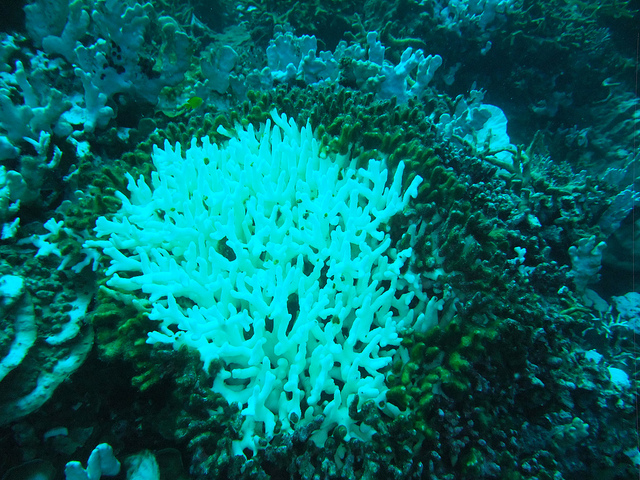Report on Severe Coral Bleaching in Western Australia and Implications for Sustainable Development Goals
Introduction
This report details the record-breaking coral bleaching event that occurred along the coast of Western Australia (WA) between August 2024 and May 2025. The event, caused by the region’s most prolonged and intense marine heatwave, has resulted in extensive damage to vital marine ecosystems. The findings underscore a critical failure to meet key United Nations Sustainable Development Goals (SDGs), particularly SDG 13 (Climate Action) and SDG 14 (Life Below Water).
Key Findings on Marine Ecosystem Degradation
A report by the Australian Institute of Marine Science (Aims) has confirmed the 2024-25 season caused the “most severe coral bleaching on record” for Western Australia. The assessment highlights the following critical points:
- Unprecedented Scale: The damage extends over 1,500km of coastline, affecting both northwestern and central reef systems.
- Extreme Thermal Stress: Many reefs were subjected to between 15 and 30 weeks of heat stress, a duration significantly longer than the eight weeks typically considered fatal to coral.
- Impact on Resilient Reefs: For the first time, significant bleaching was observed in previously robust areas, including the Rowley Shoals, north Kimberley, and the World Heritage-listed Ningaloo Reef.
- Global Context: This regional disaster is part of a two-year-long global coral bleaching event driven by record-high ocean temperatures.
Direct Threat to SDG 14: Life Below Water
The extensive coral mortality represents a profound setback for the achievement of SDG 14 (Life Below Water), which aims to conserve and sustainably use marine resources. The bleaching event directly undermines this goal in several ways:
- Loss of Biodiversity: The death of coral reefs, which are foundational to marine ecosystems, leads to a catastrophic loss of habitat for countless other species, threatening marine biodiversity.
- Ecosystem Collapse: The degradation of both the Ningaloo Reef and the Great Barrier Reef signals a systemic crisis for Australia’s marine environments, which are critical for global ocean health.
- Impeded Recovery: Climate change is causing bleaching events to become more frequent and intense. This denies coral the 10 to 15 years required for recovery, creating a cycle of degradation from which reefs cannot bounce back.
The Root Cause: A Failure in SDG 13: Climate Action
The primary driver of this ecological disaster is climate change, making it a clear indicator of insufficient progress on SDG 13 (Climate Action). Scientific consensus links the marine heatwave directly to rising global temperatures caused by carbon emissions.
- Call for Urgent Action: Federal Environment Minister Murray Watt stated the damage “underlines the need for Australia and the world to take urgent action, including reaching net zero emissions.”
- The Greatest Threat: Dr. James Gilmour of Aims affirmed, “Climate change caused by carbon emissions remains the greatest threat to our coral reefs, and all reefs globally.”
- Dire Projections: The United Nations has warned that even if the Paris Agreement target of limiting warming to 1.5°C is met, the world stands to lose 70% to 90% of its tropical coral reefs, highlighting the extreme urgency of fulfilling SDG 13.
The Imperative for SDG 17: Partnerships for the Goals
The crisis affecting Western Australia’s reefs is not an isolated incident but a symptom of a global problem that demands a global solution. This highlights the critical importance of SDG 17 (Partnerships for the Goals). The interconnected nature of the climate and ocean crises necessitates robust international cooperation to implement effective, large-scale solutions. Reaching net-zero emissions and protecting the world’s remaining coral reefs is unachievable without a unified global commitment to the principles of SDG 13 and SDG 14.
SDGs Addressed in the Article
The article on coral bleaching in Western Australia addresses several interconnected Sustainable Development Goals (SDGs). The primary issues of marine ecosystem degradation, climate change impacts, and the threat to natural heritage sites directly link to the following SDGs:
-
SDG 14: Life Below Water
This is the most central SDG to the article. The entire text focuses on the health and survival of marine ecosystems, specifically coral reefs. The article details the “worst bleaching on record” along Western Australia’s coast, the death of coral due to heat stress, and the widespread damage to these vital underwater habitats. It directly discusses the degradation of marine life and the urgent need to protect it.
-
SDG 13: Climate Action
The article explicitly identifies climate change as the root cause of the coral bleaching event. It quotes scientists and officials who state that “climate heating has caught up with these reefs” and that “climate change caused by carbon emissions remains the greatest threat to our coral reefs.” The discussion of marine heatwaves, rising ocean temperatures, and the call for “net zero emissions” firmly connects the issue to the need for urgent climate action.
-
SDG 11: Sustainable Cities and Communities
This SDG is relevant through its focus on protecting the world’s cultural and natural heritage. The article specifically mentions that the “Ningaloo Reef is a World Heritage-listed site,” highlighting that the environmental damage is also a loss of irreplaceable natural heritage for Australia and the world. The degradation of such a site undermines efforts to safeguard these assets for future generations.
Specific Targets Identified
Based on the content of the article, several specific targets under the identified SDGs can be pinpointed:
-
SDG 14: Life Below Water
- Target 14.2: “By 2020, sustainably manage and protect marine and coastal ecosystems to avoid significant adverse impacts… and take action for their restoration.” The article’s core theme is the failure to protect these ecosystems, as evidenced by the “most severe coral bleaching on record” and the damage to previously “unscathed” areas like Ningaloo Reef. The need for action to prevent further “significant adverse impacts” is the central message.
- Target 14.3: “Minimize and address the impacts of ocean acidification…” While the article focuses on heat, the underlying cause is the same: climate change. The text describes the impact of “warmer water temperatures” and a “marine heatwave,” which are direct physical impacts of climate change on the ocean, parallel to acidification.
- Target 14.5: “By 2020, conserve at least 10 per cent of coastal and marine areas…” The article’s mention of protected areas like the “World Heritage-listed” Ningaloo Reef and the Rowley Shoals relates to this target. It shows that even designated conservation areas are not immune to climate change, highlighting the need for more effective conservation strategies that address external threats.
-
SDG 13: Climate Action
- Target 13.1: “Strengthen resilience and adaptive capacity to climate-related hazards and natural disasters in all countries.” The mass coral bleaching is presented as a climate-related disaster. The article notes that reefs need “10 to 15 years to recover,” but bleaching events are becoming “more frequent, more intense and more widespread,” which prevents recovery and demonstrates a lack of resilience in the face of these hazards.
- Target 13.2: “Integrate climate change measures into national policies, strategies and planning.” The Federal Environment Minister’s call for Australia to “take urgent action, including reaching net zero emissions” is a direct reference to the need to integrate climate change mitigation into national policy to protect natural assets like coral reefs.
-
SDG 11: Sustainable Cities and Communities
- Target 11.4: “Strengthen efforts to protect and safeguard the world’s cultural and natural heritage.” The article’s focus on the damage to the Ningaloo Reef, a designated World Heritage site, directly relates to this target. The bleaching event represents a failure to safeguard this piece of global natural heritage from the impacts of climate change.
Indicators for Measuring Progress
The article mentions or implies several indicators that can be used to measure progress towards the identified targets:
-
Indicators for SDG 14 (Life Below Water)
- Extent and severity of coral bleaching: The article provides specific data points that serve as indicators of ecosystem health, such as the bleaching spanning “1,500km” and being the “most severe… on record.” Tracking the percentage and area of bleached coral over time would measure progress towards Target 14.2.
- Ocean temperature and heat stress duration: The article points to “record high ocean temperatures” and “15 and 30” weeks of heat stress as the direct cause of bleaching. Monitoring ocean temperature anomalies and the duration of marine heatwaves serves as a key indicator for Target 14.3.
- Condition of protected marine areas: The health status of the Ningaloo Reef and Rowley Shoals is used as a bellwether for the effectiveness of conservation efforts under Target 14.5.
-
Indicators for SDG 13 (Climate Action)
- Frequency and intensity of climate-related disasters: The article describes the bleaching event as the “longest, largest and most intense” marine heatwave, highlighting that these events are becoming “more frequent.” Tracking these events is an indicator for Target 13.1.
- National emissions reduction policies: The call to achieve “net zero emissions” implies that the adoption and implementation of national climate policies are crucial indicators for measuring progress toward Target 13.2.
- Global temperature rise: The article references the UN warning about limiting global temperature rises to “1.5C above pre-industrial levels,” which is a primary global indicator for climate action.
-
Indicator for SDG 11 (Sustainable Cities and Communities)
- Conservation status of natural heritage sites: The primary indicator for Target 11.4 in this context is the ecological condition of the “World Heritage-listed” Ningaloo Reef. The reported decline in coral health is a direct measure of the status of this natural heritage.
Summary of SDGs, Targets, and Indicators
| SDGs | Targets | Indicators Identified in the Article |
|---|---|---|
| SDG 14: Life Below Water | Target 14.2: Sustainably manage and protect marine and coastal ecosystems. | Extent of coral bleaching (damage spans 1,500km); Severity of bleaching (“worst bleaching on record”); Rate of coral decline (“biggest decline in coral in almost four decades”). |
| Target 14.3: Minimize and address the impacts of ocean acidification and warming. | Level of ocean temperatures (“record high ocean temperatures”); Duration of marine heatwaves (“15 and 30” weeks of heat stress). | |
| Target 14.5: Conserve coastal and marine areas. | Health status of protected areas (damage to Ningaloo Reef and Rowley Shoals). | |
| SDG 13: Climate Action | Target 13.1: Strengthen resilience to climate-related hazards. | Frequency and intensity of bleaching events (becoming “more frequent, more intense and more widespread”). |
| Target 13.2: Integrate climate change measures into national policies. | Adoption of national climate policies (call for Australia to reach “net zero emissions”). | |
| SDG 11: Sustainable Cities and Communities | Target 11.4: Protect the world’s cultural and natural heritage. | Conservation status of World Heritage sites (damage to the “World Heritage-listed” Ningaloo Reef). |
Source: bbc.com







